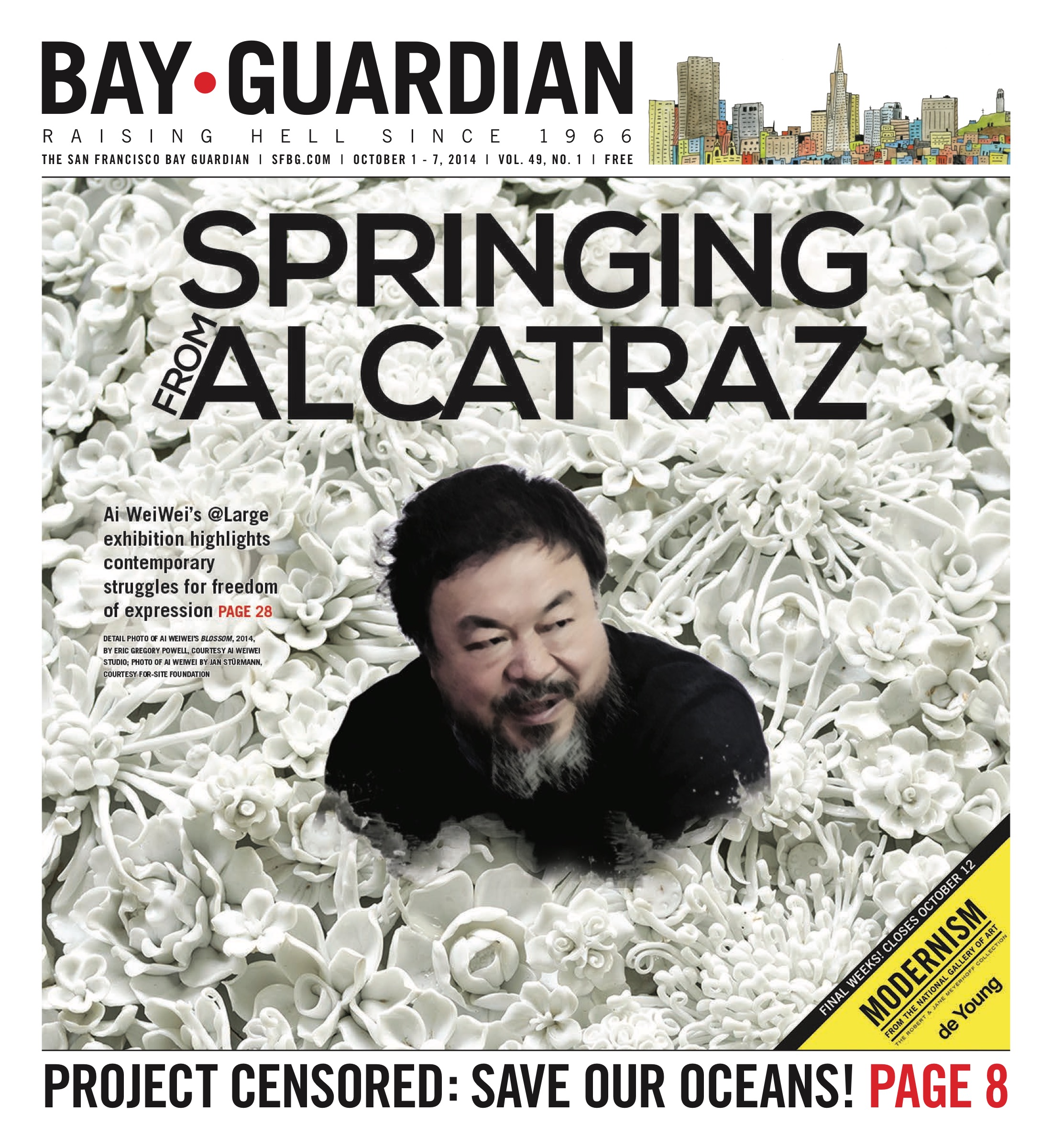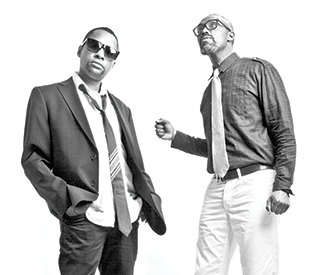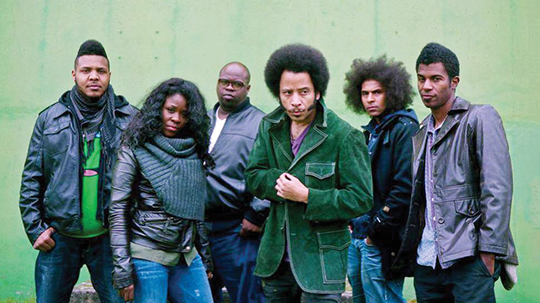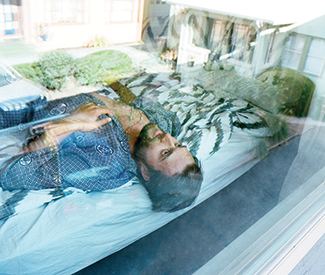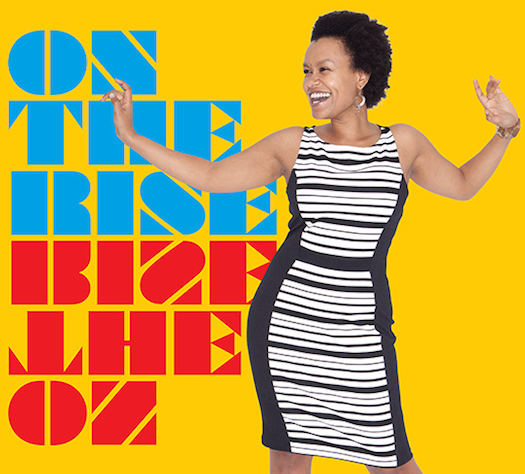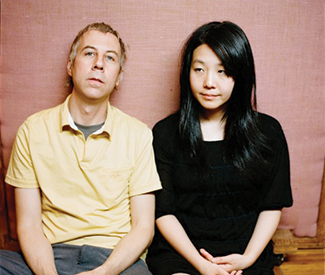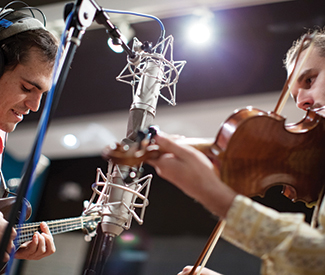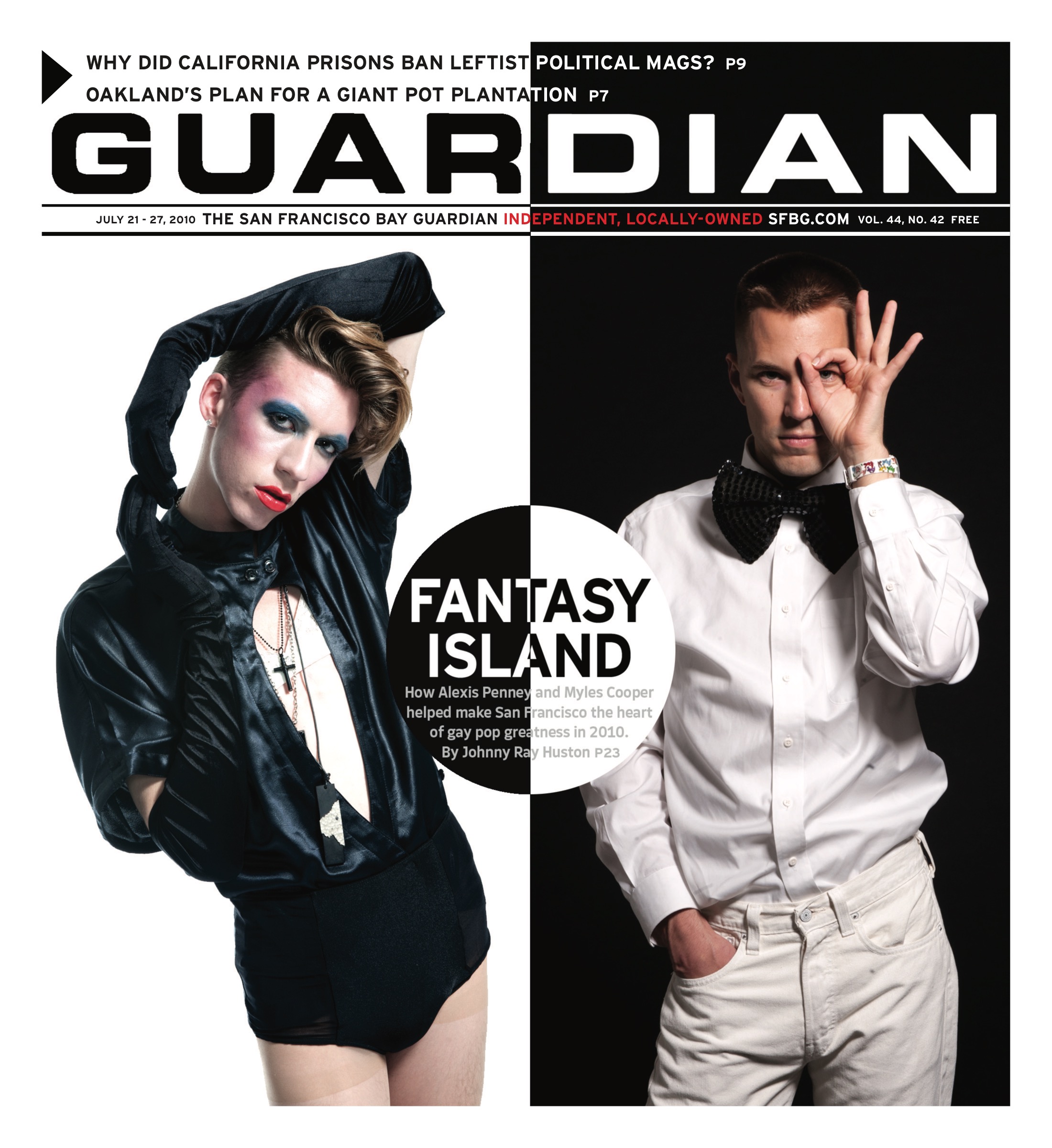WEDNESDAY 26
MUSIC
Ramona Falls
They say taking time off can be good for the soul, but when Brent Knopf faced down-time from recording as one-third of Portland, Ore., band Menomena, he couldn’t unplug. Though it’s hard to call it a solo record when Intuit boasts more than 35 collaborators, Ramona Falls follows the tradition of Knopf’s day band, forming dense electronic atmospheres from piano and pairing them with energetic drum work. Here, Knopf’s vocals shine as the truest instrument. His voice sounds like a whisper even at its most expressive. It’s a life raft to cling to while more of the nebulous Intuit opens with each new listen. (Peter Galvin)
With The National
8:00 p.m. (also Thurs/27), $30
Fox Theatre
1807 Telegraph, Oakl.
1 (800) 745-3000
www.thefoxoakland.com
THURSDAY 27
COMEDY
Craig Robinson
Name a humorous TV show from the past five years, and chances are Craig Robinson made an appearance. Bit parts on Curb Your Enthusiasm, Friends, and The Bernie Mac Show led to his star-making role on The Office as Darryl, the warehouse manager who is constantly embattled by Steve Carell’s harangues and half-baked schemes. Something about Robinson’s dry wit and level gaze tempts us to throw in our lot with him in every comedic circumstance. And now? Big screen, baby — Knocked Up, Hot Tub Time Machine, Shrek 4. Come see him get down with his original gig — stand up. (Caitlin Donohue)
8 p.m. (through Sun/30; also Fri.–Sat., 10:15 p.m.), $23.50–$25.50
Cobb’s Comedy Club
915 Columbus, SF
(415) 928-4320
www.cobbscomedyclub.com
MUSIC
San Francisco Popfest 2010: Eux Autres
Popfest is back, and it’s time to celebrate with of SF’s best pop bands, Eux Autres, who are wise enough to worship Françoise Hardy. As they succinctly put it: “Most of [our] songs are about (a) military history (b) being ‘done wrong’ or (c) sports.” For this week’s video issue, in the Noise blog I talk with guitarist-vocalist Nicholas Larimer about five of his fave YouTube clips from the ’70s TV pop music motherlode Midnight Special. (Johnny Ray Huston)
With tUnE-yArDs, Social Studies, Knight School
8 p.m., $10–$12
Rickshaw Stop
155 Fell, SF
(415) 861-2011
www.rickshawstop.com
PERFORMANCE/VISUAL ART
“Making Visible”
At a dance recital, the audience can only see so much. Beholding the coiffed hair, makeup, and costumes, it’s hard to imagine what goes on behind the scenes. But inside a dance studio, the creative process comes alive. Within countless hours of rehearsals, despite the blisters and sore joints, something alluring gradually begins to form. The Marina Abramovic Institute West offers a unique chance to witness how a recital comes together. Their series of performances are live rehearsals in which dancers learn the choreography onstage. (Elise-Marie Brown)
4:30 p.m. (through June 13), free
Marina Abramovic Institute West
575 Sutter, SF
www.marinaabramovicinstitute.org
SATURDAY 29
CLUBS/MUSIC
Surya Dub Three-Year Anniversary
It’s been a while since they blew our woofers on the regular, but our ambassadors of dread bass have been busy spreading the gospel of global dubstep to farther shores. Lucky for our feet, the Surya Dub crew are roaring back to Club Six to celebrate their third year with excellent special guest urban-electro blaster from Montreal, Ghislain Poirier (now just “Poirier”). Maneesh the Twister, Kush Arora, Kid Kameleon, Ripley, DJ Amar, J.Rogers, and Jimmy Love gird the boom with subcontinental vibes, stirring bhangra, ragga, and other worldly sounds into the low, low, low. Expect eclecticism, receive rad riddims. (Marke B.)
10 p.m.–3 a.m., $10
Club Six
66 Sixth St., SF
www.suryadub.com
MUSIC
El Radio Fantastique, Shovelman
Let us tip our hats to the newest venue along the Valencia corridor, Viracocha. It’s a wood-paneled treasure trove of for-sale antiquity. At night, the place is transformed into an atmospheric community space, a venue for word, thought, and lovely live music — like that of El Radio Fantastique, whose peculiar blend of musical theater seems straight from someone’s front porch in the Louisiana bayou. Which, come to think of it, matches the vibe at Viracocha nicely. Shovelman, a.k.a. Isaac Frankle, takes over the upstairs stage for the night. Expect to hear folksy stomp music. (Donohue)
7:45 p.m.–11 p.m., donations accepted
Viracocha
998 Valencia, SF
(415) 374-7048
www.viracochasf.blogspot.com
MUSIC
Frog Eyes
He can’t get no respect! Though the epic compositions of Frog Eyes rival those of contemporary pals Spencer Krug and Dan Bejar, as reflected by the trio’s work together in Swan Lake, Carey Mercer’s full-time band is consistently shunted to the background. Mercer can howl and he has an antiquated cadence to his voice that makes Paul’s Tomb: A Triumph sound like it belongs in another century. He’s never been in a Wolf Parade or joined the New Pornographers, but those of you who turned up Sunset Rubdown might be surprised by how much you like Frog Eyes. (Galvin)
With Mt. St. Helens Vietnam Band and Dominique Leone
9:30 p.m., $10
Hemlock Tavern
1131 Polk, SF
(415) 923-0923
www.hemlocktavern.com
DANCE
Scott Wells & Dancers: Ballistic
Did you fall in love last year with Scott Wells’ two jugglers? Apparently Wells’ dancers did as well. For Ballistic, all seven engage in elegant athleticism. Not that athleticism is new in Wells’ repertoire. Wild chaos and meticulous order — with and without projectiles — always share the game. It all looks like child’s play, but isn’t, except for an uncanny ability to be totally present in the moment. Contact improvisation — the movement genre Wells has fundamentally influenced — is often more fun to do than to watch. Not with Wells. He is a consummate man of the theater. Jin-Wen Yu Dance shares the program on the first two weekends. (Rita Felciano)
8 p.m. (through June 19)
CounterPULSE
1310 Mission, SF
brownpapertickets.com
www.scottwellsdance.com
MUSIC
Simian Mobile Disco DJ Set
With school out and summer swinging into high gear, lazy days that consist of sleeping in and drinking in the park are here. If you have a day job like me and need to pay the bills, you can free your soul at night with an epic dance party. Simian Mobile Disco has heard my call. Dress to dance and get ready to sweat. (Brown)
With Tenderlions, Ryan Poulsen
9 p.m., $15
Mezzanine
444 Jessie, SF
(415) 625-8880
www.mezzaninesf.com
MUSIC
Ab Soto
Queer hip-hop — are we done with it yet? Nope, but this time we’re laying off the “Isn’t this groundbreaking?” tiredness and having fun. The recent crop of homo-hoppers like Cazwell and local hottie Kid Akimbo are doing it cute and naturally. Enter Hollywood’s Ab Soto, whose neon-bright hotness, scruffy hipster looks, and fierce-ruling SpongeBob muumuus are more about giving you banjee boy wet dreams than making political statements. He’ll be throwing down live at the circus-crazy Big Top party. Please keep him away from my boyfriend. (Marke B.)
9 p.m.–3 a.m., $10.
Club Eight
1551 Folsom, SF.
www.eightsf.com
SUNDAY 30
EVENT
San Francisco Carnaval: “Colors Of Sound, Splashes Of Culture”
Carnaval isn’t just a festival where people drink and eat to their heart’s content. In San Francisco, we focus on Latin American and Caribbean cultures through dance and music. Of course, food is on the menu. The all-day event includes salsa and samba lessons, games, breakdancing, ecofriendly exhibits, and even a health screening center. This time, Sunday is the right day for indulgence. (Brown)
9:30 a.m., free
Bryant and 24th St., SF
(415) 642-1748
www.sfcarnaval.com
MUSIC
Kurt Elling with the Count Basie Orchestra
Kurt Elling has won Down Beat and JazzTimes critics’ polls three years in a row for best male singer. Most recently, he won his first Grammy for best jazz vocal album. Tonight he’s backed by the Count Basie Orchestra, the most prominent big band of the past 60 years. The band has accompanied Ella Fitzgerald, Ray Charles, and Frank Sinatra, and continues to support the great jazz singers of our time. As part of the SF Jazz Spring Series, Elling and the Basie Orchestra perform some of the original Basie/Sinatra charts arranged by the legendary Quincy Jones. The Basie Orchestra opens the night with classic repertoire. (Lilan Kane)
7 p.m., $25
Davies Symphony Hall
201 Van Ness, SF
(415) 864-6000
www.sfjazz.org
MUSIC
KBLX Stone Soul Concert
Wrap up your Memorial Day weekend with some soul and sunshine. A longtime Bay Area source for the soul music, KBLX has booked a solid lineup of some of smooth voices. This year’s artists include Charlie Wilson; New Edition members Bobby Brown, Johnny Gill, and Ralph Tresvant; Minnesota’s Mint Condition, and none other than Mr. Biggs himself, Ronald Isley. This concert serves up favorite jams spanning from the 1970s to the present. (Kane)
Noon, $45
Sleep Train Pavilion
2000 Kirker Pass, Concord
(925) 676-8742
www.kblx.com
www.livenation.com
MONDAY 31
MUSIC
Dark Tranquillity
It’s easy to lump them in with the rest of the ’90s Gothenburg death metal scene, but that sort of careless taxonomy is unfair to a band like Dark Tranquillity. The Swedish sextet have carved out a niche of their own on the strength of their anthemic, atmospheric melodicism, having weathered the storms that afflicted fellow travelers In Flames and Soilwork with dignity and grace. Though the music features the kind of keyboard and electronic textures that tend to alienate bread-and-butter death metal fans, these flourishes fit seamlessly into the band’s dystopian, space-age aesthetic, reinforcing the punishing grooves and soaring melodies. (Ben Richardson)
With Threat Signal, Mutiny Within
8 p.m., $18
Slim’s
333 11th St., SF
(415) 255-0333
www.slims-sf.com
MUSIC
The Very Best
A collaboration between Malawian vocalist Esau Mwamwaya and London production duo Radioclit, the Very Best offers vocals in Chichewa over dance beats that translate to fun in any language. Fun is the chief goal of the duo, who rose to blog fame in 2008 with Malawian remixes of Vampire Weekend and M.I.A. If you need proof that smiles are contagious, singer Esau Mwamwaya has a grin that is promptly reflected on the frowniest of show-goers. Trust me, it’s undeniable. (Galvin)
With Disco Shawn
8:00 p.m., $18 (21 and over)
The Independent
628 Divisadero, SF
(415) 771-1421
www.theindependentsf.com
TUESDAY 1
COMEDY/PERFORMANCE
Cloris Leachman
At 84, actress Cloris Leachman shows no sign of slowing down. From her first major film role in the noir classic Kiss Me Deadly, to her portrayal of Ruth Popper in The Last Picture Show (which won her an Oscar for best supporting actress), to her hilarious turn as Frau Blucher in Young Frankenstein, Leachman has memorably seized the big screen. The nine-time Emmy Award winner made her mark on The Mary Tyler Moore Show and Phyllis and keeps on keeping on with recent stints on Malcolm In The Middle and Dancing With The Stars. This six-night run of her one-woman stage show takes audiences on a trip through moments from her extraordinary life. (McCourt)
8 p.m. (through June 6), $40–$45
Rrazz Room
222 Mason, SF
www.therrazzroom.com
MUSIC
Gates of Slumber
The Indianapolis warriors in Gates of Slumber play an arresting offshoot of doom metal, a NWOBHM-inflected rumble that sounds like Cirith Ungol fighting St. Vitus to the death. Singer Karl Simon is built like a barbarian but sings like a dying druid, all reverb and haunting, ethereal resonance, and his band is well-built to underscore his epic tales of war and bloodshed. If there were a way to resurrect Frank Frazetta with the power of down-tuned guitars and thunderous drumming, these guys would have figured it out by now. Unfortunately, all we can do is mourn and bang our heads. (Richardson)
With Black Cobra, Slough Feg, Salvador
8 p.m., $10
Thee Parkside
1600 17th St., SF
(415) 252-1330
www.theeparkside.com
The Guardian listings deadline is two weeks prior to our Wednesday publication date. To submit an item for consideration, please include the title of the event, a brief description of the event, date and time, venue name, street address (listing cross streets only isn’t sufficient), city, telephone number readers can call for more information, telephone number for media, and admission costs. Send information to Listings, the Guardian Building, 135 Mississippi St., SF, CA 94107; fax to (415) 487-2506; or e-mail (paste press release into e-mail body — no text attachments, please) to listings@sfbg.com. We cannot guarantee the return of photos, but enclosing an SASE helps. Digital photos may be submitted in jpeg format; the image must be at least 240 dpi and four inches by six inches in size. We regret we cannot accept listings over the phone.

